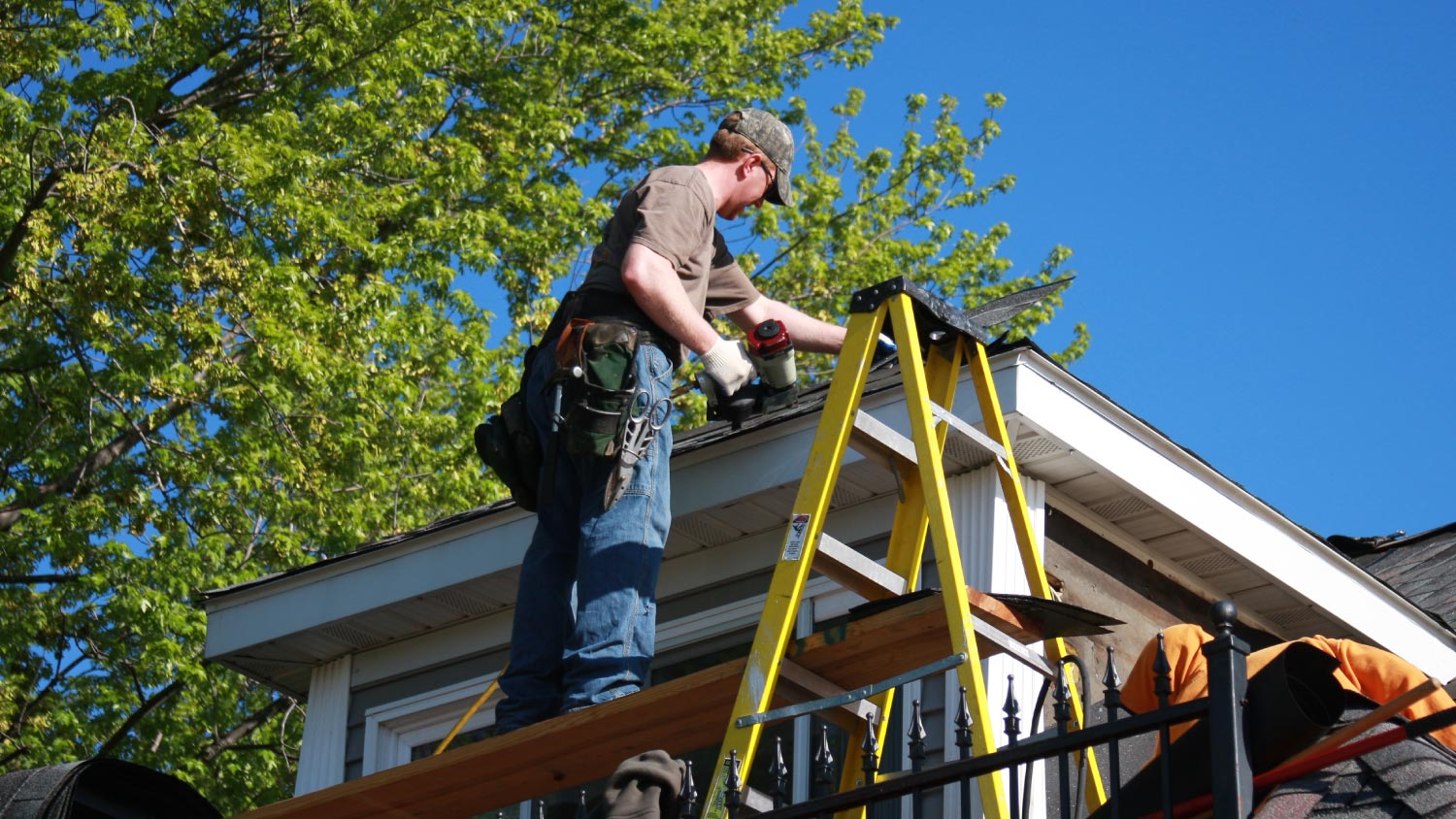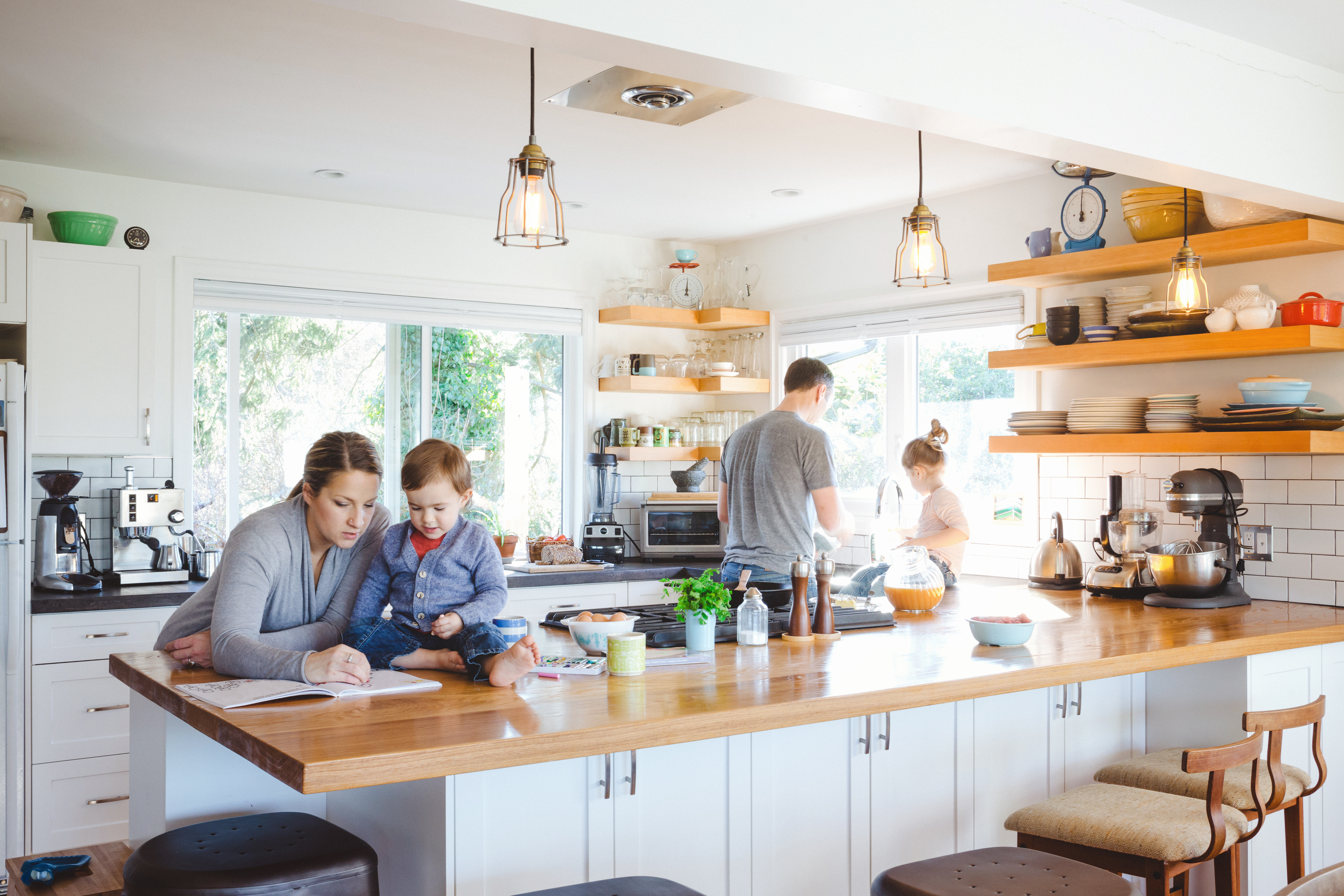
Log cabin costs vary depending on the size of the cabin, the location, and the cabin style. This guide will help you figure out the true cost of a log cabin.
These home improvements can dramatically affect your insurance premiums


Taking on home improvement projects can be temporarily stressful, but the benefits you gain are well worth the work to get there. Many remodeling projects have a high ROI (return on investment), boosting your home’s value while becoming a more comfortable place to live. In some cases, home improvements can even lower your homeowners insurance premiums.
Homeowners insurance costs between $900 and $1,800 per year, depending on your home’s geographic location, size, and value—but these nine home improvements may lower your insurance costs so you can keep more of your hard-earned money in your pocket.

Want to get the most significant insurance discounts out of your home improvements? A top home renovator near you can help. Here are the nine improvements most likely to result in a deduction in your insurance premiums.
Old plumbing pipes are often made from lead, clay, or galvanized piping. Not only are these types of pipes not up to current building codes, but they can also crack and rust and become a health hazard. Replacing older pipes with copper or PEX lines decreases the chances of flooding and sewer backups, which in turn can reduce your insurance premiums. Plumbing pipe replacement costs around $370 to $2,130, depending on the type of pipe and the project scope.
Aging electrical wiring cannot handle the amperage of current electrical appliances, making it a fire hazard. Replacing your home’s aluminum or knob-and-tube wiring with copper wiring makes your home safer and decreases your chances of filing an insurance claim. With less risk, your insurance premiums will likely drop as well. Rewiring a house costs between $600 and $2,600.
Older HVAC units are often inefficient and at risk of failure. Replacing yours with a new, energy-efficient unit saves you money on electricity and decreases the likelihood that your pipes will freeze due to a broken furnace. Frozen pipes can burst and cause extensive water damage to a home, leading to a costly insurance claim. Therefore, replacing your HVAC unit could lead to a drop in your home insurance premiums. Remember that HVAC replacement costs an average of $7,500, making it a more expensive upgrade.

A damaged or aging roof can lead to expensive insurance claims. Repairing or replacing your roof decreases the chances of leaks, water damage, and even structural damage. This, in turn, reduces the chances you’ll need to file an insurance claim. A new roof can decrease your insurance premiums by 5% to 35%.
Wind and hail-related damage is among the most common losses in homeowners insurance claims. Many insurance providers offer premium discounts if you retrofit your home with weather-resistant upgrades, such as storm-safe windows with impact-resistant glass and storm shutters. The discount varies by geographic area and insurance provider but could be around 10% to 15%.
Additionally, a seismic retrofit could reduce your insurance premiums in areas with a high risk of earthquakes. For example, the California Earthquake Authority (CEA) offers premium discounts of up to 25% for policyholders who complete a brace and bolt retrofit to secure their home to the foundation.
Many home insurance providers offer a discount for installing a home security system with professional monitoring. A home security system may include door and window sensors, motion sensors, and security cameras. The presence of such a system can deter intruders—and if you are a victim of a break-in, you may be able to identify the perpetrator using security camera footage. Installing a home security system costs between $300 and $1,240 and could save you 10% to 20% on your insurance premiums.
A high-quality fire system can sense heat and smoke and sound an alarm to alert you early on. The sooner you’re aware of a fire in your home, the faster you can act and the less damage your home will sustain. Installing fire system upgrades could save you 5% to 20% on your insurance premiums.
Smart home devices are common in modern homes. They can help increase the efficiency of your home systems and appliances and can save you money on your utility bills. And installing smart home technology could also lead to a decrease in your homeowners insurance premiums.
Your deadbolt is your home’s first line of defense against would-be intruders. Some homes may not have deadbolts on their entry doors, while others may have insufficient deadbolts. Installing a new deadbolt could decrease your insurance premiums because it lowers your risk of filing a theft claim.
While several home upgrades could decrease your insurance premiums, some upgrades could have the opposite effect. These are some home improvements that could increase your home value but also raise your insurance rates.
Installing a swimming pool can add value to your home—especially if you live in a region with warm weather year-round. For this reason, many consider the average cost of installing an in-ground pool of $65,000 to be worth it.
However, insurance companies consider swimming pools “attractive nuisances” because they increase liability risk. Your insurer may require you to add extra liability coverage to your policy, increasing your rate. And even if you aren’t required to get extra coverage, you’ll probably notice your premiums creep up anyway since you’re at a higher risk of filing a claim.
Moving to a new home to accommodate a growing family is stressful, so some people stay put and add onto their current home instead. A home addition costs between $22,000 and $82,500, often less than buying a new home. An extension adds square footage to your home and will likely increase your home’s value. However, that additional square footage and home value require more dwelling coverage from your homeowners insurance policy, which will cause your premiums to go up.
Upgrading the kitchen or bathroom is a popular home improvement—and for good reason. According to the 2024 Cost vs. Value Report by Remodeling Magazine, a bath remodel recoups 73.7% of its cost, while a minor kitchen remodel recoups 96.1%. However, the upgraded materials in your new kitchen or bathroom will cost more to replace if damaged or destroyed, leading to more expensive insurance claims. For this reason, you might see your insurance premiums increase after remodeling your bathroom or kitchen.
A dedicated home office is a must-have for many homeowners and homebuyers, so adding one in your home can increase its value. However, if you’re using the office for a home business, you will likely need additional insurance coverage that will add an extra premium to your budget. Your insurer might permit you to add an endorsement to your homeowners insurance policy or take out a separate business owner’s policy (BOP).
From average costs to expert advice, get all the answers you need to get your job done.

Log cabin costs vary depending on the size of the cabin, the location, and the cabin style. This guide will help you figure out the true cost of a log cabin.

The cost to build a root cellar depends on size, location, materials, and other variables. Our guide will help you decide which option is best for you.

The cost to build a brick house is high, but the aesthetic and durability can be well worth the investment if you’re looking for something unique.

Home warranties offer protections for your home, but are they worth it? Let’s look at home warranty pros and cons to find out.

Learn the essential foundation requirements for adding a second-story addition to your home, how much it costs, and other considerations.

Knowing the differences between a barndominium vs. modular home opens your options regarding affordable abodes built for real living.